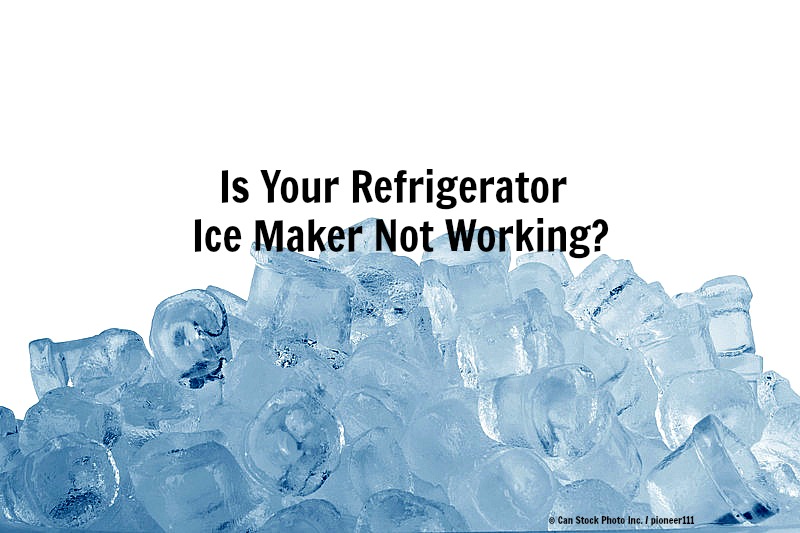Home Maintenance Tip: Is Your Refrigerator Ice Maker Not Working?
Posted on May 20, 2016
Refrigerators, one of the hardest working appliances in our homes, often have automatic ice makers. These ice makers have become so convenient that we forget the old days of making ice cubes from manual ice trays. So, when the ice maker has a problem, it’s an annoyance.
Understanding how an ice maker works can help you troubleshoot when a problem develops. A ¼” water supply line runs from the water pipe to the refrigerator’s water fill valve. An electric solenoid provides a signal when to send water to the ice maker assembly. Water is directed to an ice mold where the water freezes making ice. After the water has frozen, the thermostat turns on a heater to slightly warm the ice. The ice is ejected from the ice mold and directed into the ice bin compartment. Then, the water fill valve allows water to fill up the ice mold again and the cycle continues. When the bin is full, the shutoff arm is raised and the ice maker is signaled to stop making ice.
The most common problems that plague ice makers are the failure to make ice, producing small or hollow ice and ice that smells or tastes bad. Here are some troubleshooting tips:
- Determine if the ice maker is turned on. The shutoff arm should be positioned as low as it will go. In the raised position, the shutoff arm signals the icemaker not to make any ice. The arm is raised when the ice bin compartment is full or when you manually raise it if you do not want to make ice.
- Make sure that the ice bin compartment is seated properly. If the bin is not fully pushed back into its position, the ice maker may not be triggered to start making ice.
- Check the water pressure. Insufficient water pressure is a common reason why ice makers fail to work. The water pressure should be at least 20 psi but preferably a minimum of 40 psi to work well.
- Check the freezer temperature. The freezer temperature must be 0-8 degrees Fahrenheit. Two to four degrees higher could cause your icemaker not to work. If there is difficulty maintaining this low temperature, then the refrigerator may not be removing the heat it creates. Dirty condenser coils covered with dust, dirt and pet hair are likely the reason. Remove the bottom grill and use your vacuum cleaner long hose attachment and/or a refrigerator brush to clean the coils.
- Look for kinks or crimps in the plastic tubing. Make sure that water is flowing freely from the water supply through the plastic tubing to the ice maker. Also look for frozen areas of the water tubing and make sure that the water supply valve is turned on.
- Check the water filter if you have one. Water filters can become clogged with sediment preventing water from entering the ice maker.
- Dump old ice if it has a bad odor or taste. Ice can absorb refrigerator and freezer odors over time.
- Keep your freezer ¾ full of food to prevent clumping ice cubes. Ice in the ice bin will absorb heat from the defrost cycle. The ice begins to melt during this time and then refreezes in clumps. If the freezer is full, then the food will absorb some of the warmth and prevent the ice from melting as much.
Follow these tips if you have a problem with your ice maker. If your problem isn’t solved, call in an appliance service technician.
Please Like Us on our Facebook page or Follow Us on Google Plus
If you have questions about your home’s foundation or foundation repairs, contact Atlantic Foundation and Repair at 919-855-0855.
